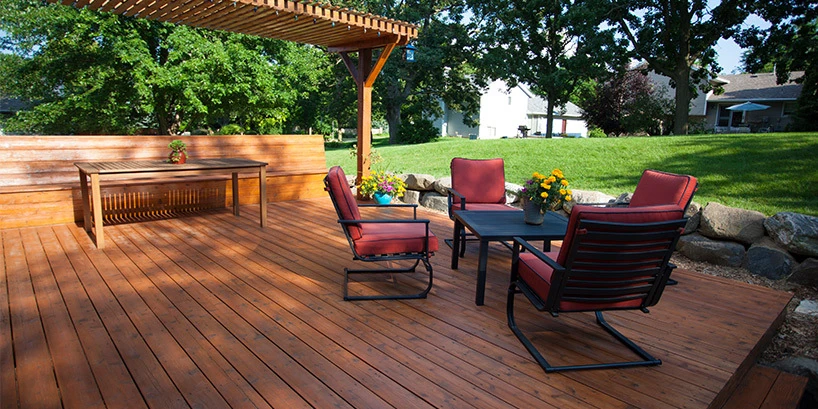
Green Living: Eco-Friendly Backyard Improvements and Sustainable Decking
Have you been thinking about improving your backyard? Perhaps something is missing from your already beautiful outdoor space. Is it new furniture or lighting?
While they may help, you might consider an eco-friendly touch with sustainable plants, materials, and more. Making eco-friendly backyard improvements is a great way to help your environment and your home’s aesthetic. But if you need help figuring out where to start, we have a few suggestions to help you kickstart your renovations.
First, What Makes a Home Sustainable?
The journey to creating a sustainable outdoor space isn’t only about having beautiful-looking grass. It’s about reducing your yard’s carbon footprint by adjusting the chemicals used for its upkeep or using strategies that contribute to a healthier ecosystem overall. Furthermore, using these practices will help your yard maintain itself in the long run while aiding the environment.
Sustainable Suggestions
1. Use Sustainable Decking Materials
An outdoor deck is an excellent multipurpose space and an area frequented often during warmer seasons. If you’re thinking about renovating it, consider the materials used. Sometimes, items used to build or remodel an outdoor deck aren’t environmentally friendly and could impact your home and the surrounding area.
However, there are a few materials you can use for the project, such as:
- Bamboo: A type of grass that’s become recently popular because of its durability and attractiveness. It also comes in various stains, making it easily adaptable to your aesthetic needs.
- Reclaimed wood: This wood is often more robust than other new lumber because of the structures it was used for. Plus, using reclaimed wood for your outdoor space is a great way to actively participate in tree preservation.
- Plastic lumber: Another strong material made from recycled plastics. This type of lumber can last decades without staining or sealing.
- Composite materials: Composite decking is made from recycled wood fibers and plastics, which stand the test of time against rotting and splitting.
While these materials are great to use for your sustainability project, they might not be approved by your local municipality. There are specific codes you have to follow when making home renovations. So, before starting, check the local building codes to ensure you can use these supplies. Also, consider environmental factors that could increase your deck’s wear and tear when choosing items.
2. Opt for Eco-Friendly Deck Stains
Deck staining is a surefire way to bring your outdoor space to life. The various finishes can also help preserve your deck from outdoor elements all year round. On the other hand, most deck staining materials contain toxic chemicals—-also known as volatile organic compounds (VOCs)—that can harm the environment and your health.
Finding the best deck stain that’s also eco-friendly can be slightly challenging. So, if your search turns up fruitless (which it won’t), you can use other methods to stain your deck, like using plant oils, waxes, or water-based acrylics.
3. Plant Native Foliage
Plants are a beautiful sight to have around your home. The combination of leaves and flowers can make your backyard even more comforting than it already is. Although plants can help uplift the space, they can also detract from your sustainability goals.
Your location and climate are significant factors in a plant’s lifespan. Planting non-native foliage means upkeep can be a bit more complex. You could find yourself using a lot of water to ensure the plants survive, which is good for them but will take away from what you’re trying to accomplish.
Instead, look for plants that can survive in your climate. For example, if you live in a colder region, ideal plants include pansies, snowdrops, and violas. It would also be best to group plants with similar needs. Doing so helps eliminate unnecessary actions that could increase your carbon footprint.
4. Create Permeable Pavers
Whenever there’s excess rain, the right move is shooing it away from your property with the help of storm drains. However, drains can get clogged up, creating an unpleasant situation in your backyard.
Rather than using storm drains, create permeable pavers around your yard. These allow rainwater to naturally seep back into the ground rather than huddling around a drain. And you can find a creative design that will add to your home’s appeal.
Is an Eco-Friendly Backyard Worth It?
To answer your question, yes, it’s worth it. Using sustainable practices won’t take away from the aesthetic you’re aiming for with your property. Instead, using eco-friendly practices will enhance your home’s look and lower your carbon footprint, making the surrounding environment healthier for all.